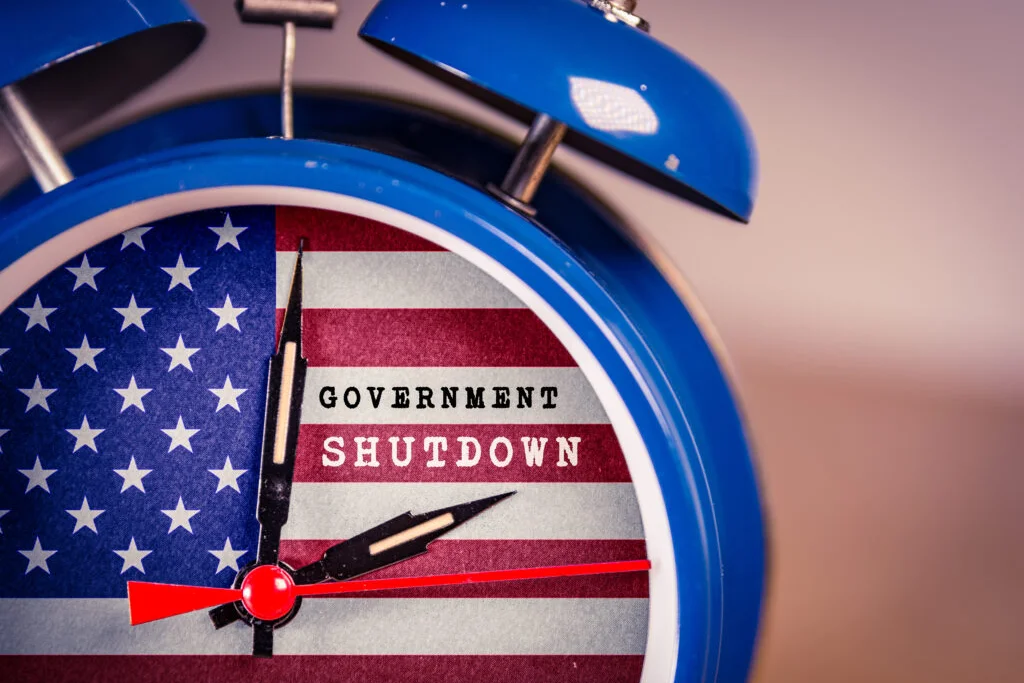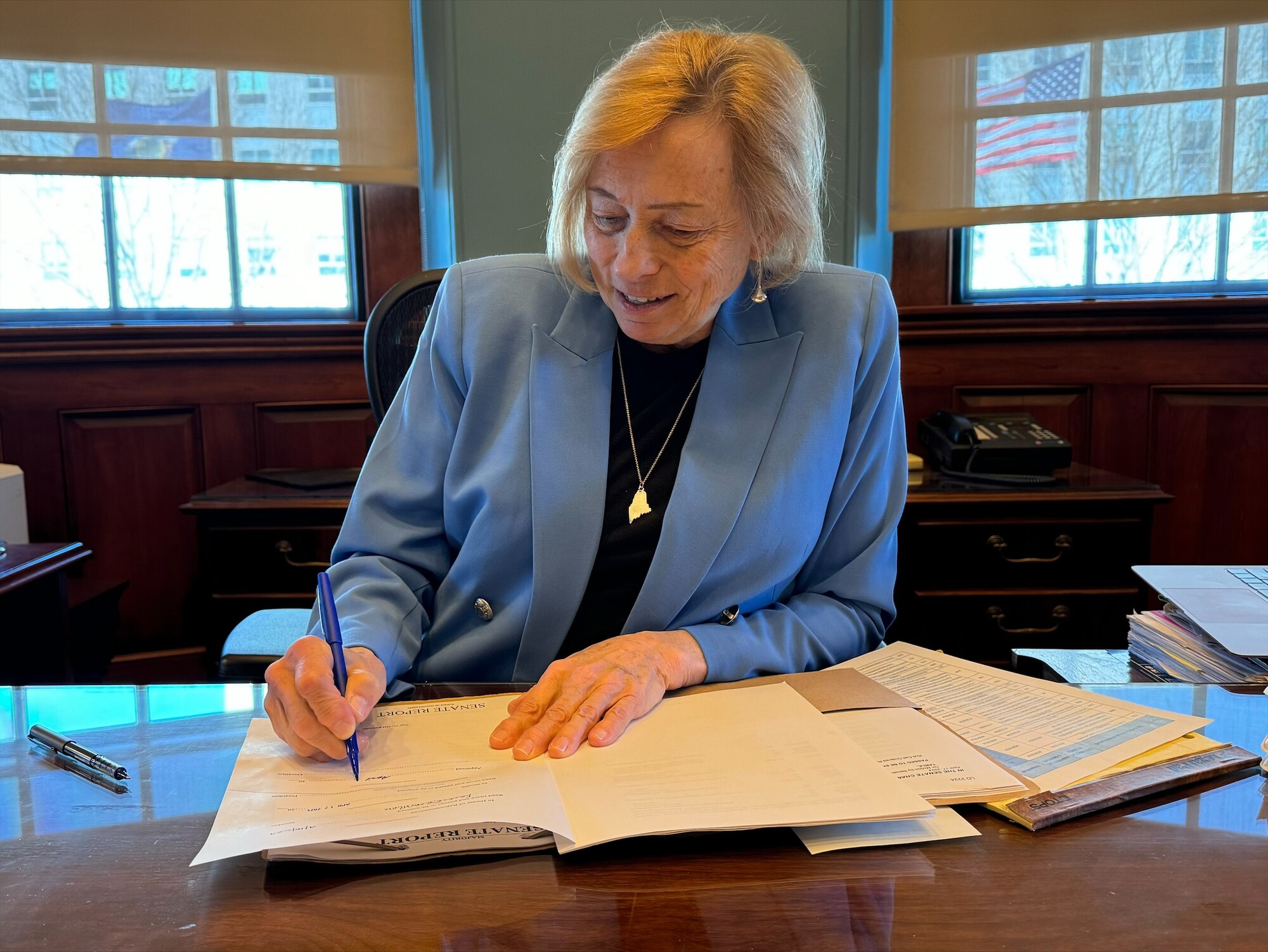Who Gets The Blame For A Government Shutdown, Republicans Or Democrats? Here’s What Voters Say

The odds of a government shutdown on Oct. 1 have increased with Democrats and Republicans unable to reach a temporary or long-term solution.
Here’s a look at who voters think should get the blame and what sectors could be impacted by a shutdown.
SPY shares are testing new highs. See what is driving the move here.
Blame Game Goes Around
Leading members of Congress and President Donald Trump have passed the blame for a government shutdown to the opposing parties, while voters and consumers could be left with the lingering effects.
Senator Majority Leader Chuck Schumer (D-N.Y.) has placed the blame on any government shutdown on President Trump, going so far as to call the pending funding deadline the “Donald Trump shutdown.”
House Minority Leader Hakeem Jeffries (D-N.Y.) said Democrats would support a bipartisan spending plan that safeguards health care.
Trump, meanwhile, is blaming the Democratic Party and could be using a looming shutdown as political leverage.
The White House has warned that a government shutdown will result in mass layoffs, potential furloughs and the termination of federal employees.
A Morning Consult poll shows that voters are more likely to place the blame on the Republicans in Congress if a shutdown happens. Here are the results from all voters for who should get the most blame for a shutdown:
Democrats in Congress: 32%
Republicans in Congress: 45%
Other: 7%
Don’t Know: 16%
Republican voters in the poll were more likely to blame their own party for a shutdown at 33% versus 22% for Democratic voters.
Among independent voters, Republicans in Congress got the higher blame percentage at 41% versus 24% for Democrats in Congress.
The Republicans have a majority in the House of Representatives and Senate. While they need support from Democrats to pass the funding bill, the majority control could lead to the perception that they are more at fault for any shutdown.
On Tuesday, Trump doubled down on his blame for the Democrats in Congress if there is a shutdown and said he would cut programs and things that the party likes, following up on his threat of mass firings.
“They’re taking a risk by having a shutdown,” Trump said, as reported by the New York Times.
Read Also: JD Vance Warns Government Shutdown Will Happen, But Bull Market Remains Intact, Analysts Say ‘Buy The Dip’
Betting Odds Rise
On the prediction market Kalshi, the odds of a government shutdown occurring on Wednesday, Oct. 1, currently stand at 87%, suggesting a shutdown is more than likely to happen. This is an increase from the odds of 65% from last Thursday.
Another prediction market allows users to predict how long a government shutdown will last, with a forecast of 5.2 days. Here are the betting odds:
More than 0 days: 89%
More than 3 days: 66%
More than 5 days: 62%
More than 10 days: 45%
More than 35 days: 15%
Prediction markets suggest that a government shutdown is more likely than not, which should prompt investors to pay close attention.
What Happened During The Last Government Shutdown?
The last major government shutdown occurred from Dec. 22, 2018, to Jan. 25, 2019. At 35 days, this marked the longest government shutdown in American history.
Investors will closely monitor a potential shutdown, as stock market indexes such as the S&P 500, which is tracked by the SPDR S&P 500 ETF Trust (NYSE: SPY), could be volatile during a government shutdown.
The SPDR S&P 500 ETF Trust closed at $240.70 on Dec. 21, 2018, ahead of the deadline, which was on a weekend. The ETF opened at $239.04 on Dec. 24 and closed at $234.34, dropping 2.6% from the previous closing price.
The ETF traded lower and was highly volatile during the start of the shutdown, but eventually traded higher, likely due to optimism for a funding resolution.
On Jan. 25, 2019, the ETF closed at $265.78, up 10.4% from its closing price prior to the shutdown.
The year 2019 went on to be one of the best years investors have seen in some time, with the SPDR S&P 500 ETF Trust up 31.2% for the whole year.
This is the best return for the ETF over the past 11 years, indicating that the longest government shutdown in history was only a minor factor in 2019 and did not significantly impact markets at the start of the year.
Benzinga recently shared that the S&P 500 was up during eight of the last 11 government shutdowns, including the most recent four shutdowns.
What Shuts Down During A Government Shutdown?
A federal government shutdown could see many sectors and areas of the country impacted, with many federal workers facing layoffs, furloughs or no payments until a solution is reached and put into place. Here are some of the impacts:
Military employees would likely not be paid during a shutdown.
National parks would be closed.
The Labor Department and IRS would operate on limited basis, with no manned help lines for consumers.
Regional Department of Veterans Affairs offices are expected to close.
Social security benefits would still go out.
The FDA would not process any new drug applicants.
Supplemental Nutrition Assistance Program (SNAP) benefits would be covered for up to one month.
The National Zoo and the Smithsonian in Washington D.C. would not open.
Among the sectors that could be hit the hardest would be the airline sector, which could impact airline stocks like Delta Air Lines (NYSE:DAL), Southwest Airlines Co. (NYSE:LUV), United Airlines Holdings Inc. (NASDAQ:UAL) and American Airlines Group Inc. (NASDAQ:AAL).
Air traffic controllers and other federal employees would work, but would be unpaid. The FAA would also stop hiring and training new air traffic control workers. Oftentimes in shutdowns, there are shortages of workers due to call-offs and workers not being paid. There would likely be delays and potential cancelled flights for airlines under a shutdown.
Read Next:
Donald Trump’s Looming Shutdown Could Trigger Mass Layoffs, Slash Regulations and Deploy Troops
Photo: Ivan Marc via Shutterstock



